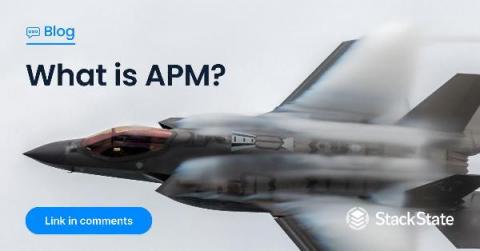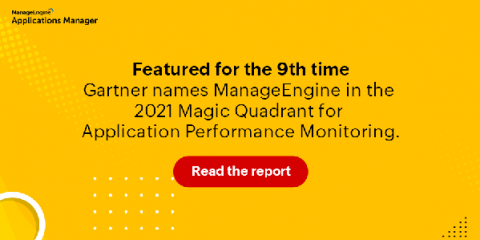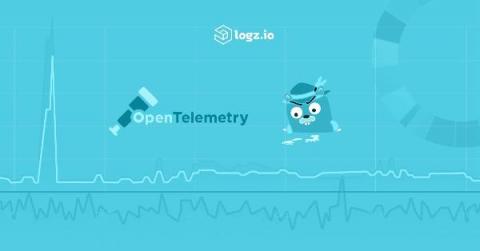Operations | Monitoring | ITSM | DevOps | Cloud
May 2021
Synthetic Monitoring of Amazon WorkSpaces
Amazon WorkSpaces enables you to provision virtual, cloud-based Microsoft Windows or Amazon Linux desktops for users. WorkSpaces eliminates the need to procure and deploy hardware or install complex software. You can quickly add or remove users as your needs change. Users can access their virtual desktops from multiple devices or web browsers.
Identify high latency issues with SigNoz in 5 quick steps
Ways AI is Driving More Efficient Application Performance Monitoring
In the digital age, the speed and performance of apps and websites have a huge impact on the customer experience. To ensure a high level of quality, Application Performance Monitoring (APM) refers to the process of tracking the performance and availability of software systems. Let’s look at what Application Performance Monitoring is, how AI and machine learning are being applied to stay ahead of the competition, and several real-world use cases.
What Is APM?
Suppose your website’s sales volume per hour suddenly drops. Something’s wrong. You also notice a fluctuation in the time it takes for a customer to add the last item to their cart and finish checkout. In this time, they enter payment details, log in to a payment portal, and finalize the purchase. This takes, on average, four minutes. However, this number has suddenly spiked three-fold to 12 minutes. Something’s definitely wrong.
AppDynamics AWS Lambda Extension Is Now Generally Available
We are happy to announce that the AppDynamics AWS Lambda Extension is now generally available to our customers.
What Does Modern Infrastructure Include and How Do You Monitor It?
A bittersweet anniversary for eG Innovations
For me, it’s been 20 years since eG entered the US marketplace-at that time, I was one of their first customers and have remained close to them ever since. For a company to survive two decades in an unbelievably complex and competitive performance monitoring landscape is no small feat, and I believe we are still a ‘gem’ in an often confused and fragmented marketplace.
Giving Security a Seat at the Table with Full-Stack Observability
Protect your end user with a modern approach to application security. Learn how an observability platform can help unite IT teams.
Tip of the Month: Baseline Basics
The report is out: We made the Gartner Magic Quadrant again!
Enhancing digital performance has become a major priority for organizations today. Limited in-person interactions have forced people to depend on applications for their day-to-day needs. This is why an optimal digital experience has become synonymous with an organization’s ability to thrive. At ManageEngine, we are constantly focused on evolving and adapting to shifting technology trends.
Identifying Bottlenecks in DigitalOcean Before Your Customers Do
IaaS, PaaS, SaaS - Sorting Through the Alphabet Soup of "as a Service"
A move to the cloud can seem daunting, especially when you’re unsure if IaaS, PaaS or SaaS is right for your business. Read on to crack the acronym code.
Launch Notes: Native Core Web Vitals, versionised deployment tracking, updated APM
A guide to single-page application performance
Single-page applications (SPAs) present a unique approach to building web applications. They help to increase development velocity and can present big performance wins when it comes to delivering a fast and seamless user experience. Monitoring SPAs for performance still comes with a unique set of challenges, like choosing the most impactful metrics, gaining visibility into app performance over time, and knowing what metrics you can get from the browser. The main benefit of using SPAs is that a page does not need to reload when the content on the page changes. However, this feature, and the fact the page does not reload, is what makes it hard to monitor SPA performance.
Adding free and open Elastic APM as part of your Elastic Observability deployment
In a recent post we showed you how to get started with the free and open tier of Elastic Observability. Today we'll walk through what you need to do to expand your deployment so you can start gathering metrics from application performance monitoring (APM), or "tracing" data in your observability cluster, for free.
From Distributed Tracing to APM: Taking OpenTelemetry & Jaeger Up a Level
It’s no secret that Jaeger and OpenTelemetry are known and loved by the open source community — and for good reason. As part of the Cloud Native Computing Foundation (CNCF), they offer one the most popular open source distributed tracing solutions out there as well as standardization for all telemetry data types.
Rappi Relies on Splunk Observability Cloud to Meet its 30-Minute Guarantee
Datadog Live Containers - Kubernetes Resources
Splunk APM maximizes performance by seeing everything in your application.
10 Tools and Techniques to Test Your IT Infrastructure Resilience
Many of our customers are large enterprises with critical highly-available and secure infrastructures. This means that they spend (as do we) a lot of time proactively investigating and stress-testing systems, indeed we and many other vendors also provide tools within our products to assist in “kicking the tyres”. However small or large your enterprise is though, it’s a methodology and mindset that you can embrace with plenty of free and open-source tools out there to assist you.



















